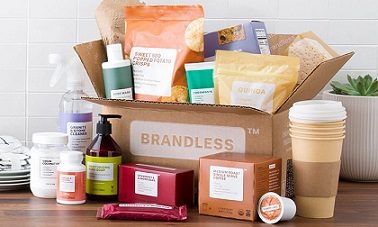I grew up in a family that always seemed to be on the hunt for a good sale. Whether it was clothing, electronics or home goods, we never passed up an opportunity to buy an item for MUCH less than it was two days ago. Now, don’t get the wrong impression, I’m not an extreme couponer by any means. Nor do I sit outside in the cold for hours waiting for the doors to open on Black Friday. But a good sale has my name written all over it—especially clothing. Food and beverages, however, were never really something that we compromised on in terms of price, especially since I grew up in a household that favored organics. We were 100% guilty of buying a product we knew of and trusted rather than a cheaper, lesser known, alternative. I never even thought to buy “Toasted Whole Grain Oats” on the bottom shelf when “Cheerios” was right at eye level and is from a brand I know and trust. And let’s be honest— “Cheerios” just has a better ring to it.
Best Way to Measure Brand Value, Price and Size of a Product
I always wondered how companies knew exactly what consumers wanted. It never occurred to me that there were survey techniques that could be used to identify needs as well as the best way to price, size and package a product. That is until I started at TRC. I just assumed that companies use the standard question and answer format in order to get the information they desire. Once I began working on surveys, I learned that some companies were already utilizing a
conjoint analysis to better understand its consumers’ needs, interests and perceptions. By showing several variations of the same product and only changing minor features across each group (such as the size, cost, packaging and other attributes), these surveys seek to identify the characteristics most appealing to respondents. This, in turn provides companies with the data they can use to assess their brand equity, while also seeing what they can do to modify their product and/or packaging, ultimately to increase sales. But is this enough to retain loyal customers?
What about Off-brand Products?
It wasn’t until I graduated from college and started working full time that I learned there are stores essentially devoted to off-brand products and are actually thriving. Imagine a store filled not only with “Toasted Whole Grain Oats,” but an off-brand product for everything you use. Yeah, that’s Brandless.com and stores like Aldi. Since realizing that I can fundamentally get the same item for much less, these types of stores have easily become some of my favorite places to shop. They have very minimal, if any, advertising throughout the store, so there is really no pressure when it comes to buying anything. Brandless.com, is just as it sounds. It takes the brand name off of every single item and shows you exactly what you are paying for. And to make it even better, both of these stores have organic products for a fraction of the cost. But, are these types of stores currently being seen as a major threat to well-known companies?
Can Optimization Conjoint Research Be Further Optimized?
Typically, when doing research, we tend to only include brand-name products and services; which makes sense seeing as those are the ones that are most popular and come to your mind first. However, now that there’s this new segment of stores totally devoted to off-brand products, it may be time to break the mold and include generic and “brandless” companies when conducting choice research to
measure brand equity. When it comes down to it, it’s only a matter of time before products like “Toasted Whole Grain Oats” begin to take over. How prepared is your company?

